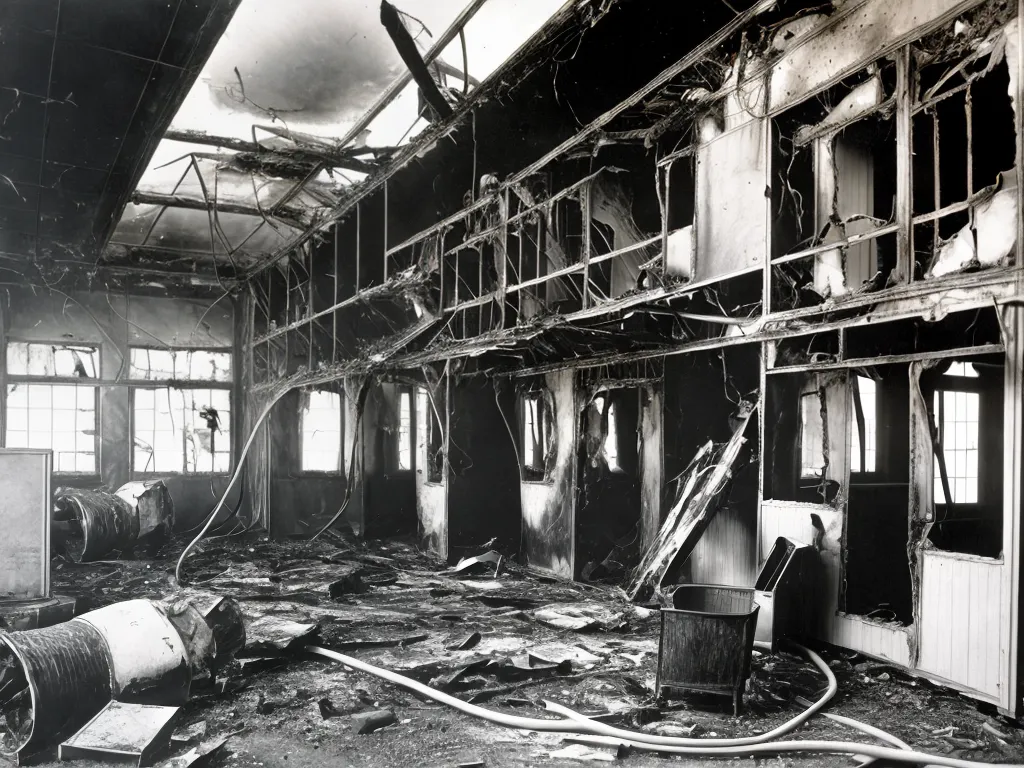
How Early Electrical Systems Caused Fires and Other Accidents
Introduction
The early days of electricity brought many conveniences into people's homes, but also introduced new hazards that took time to understand and mitigate. As thrill-seeking consumers rushed to adopt the latest electrical gadgets without adequate safety measures in place, they soon learned about the dangers of electricity the hard way. Frequent electrical fires and shocking accidents became an accepted risk of progress during this transitional period.
Primitive Wiring Methods
In the late 1800s, electricity was just becoming available to consumers, who were eager to light up their homes. But the electrical wiring methods and materials available at the time were quite primitive compared to today's standards.
Early electrical systems used copper wiring with no insulation. Wires were simply strung along the walls and ceilings, with no conduits or other protections. This exposed wiring was prone to degradation and accidental damage. Any breach in the wire insulation could lead to sparks, overheating, fires, or electrical shocks.
Even when covered in cloth or tar tape, these early wires were a hazard. I remember when my great-grandfather told me how his childhood home nearly burned down after frayed wiring insulation started a fire in the walls. Improperly protected wires touching wood framing was a common fire starter.
Early Appliances Had Few Safeguards
The appliances and lights powered by these wiring systems also lacked key safety features that we now rely on. Fuses, circuit breakers, and surge protectors were gradually introduced to prevent overloads. But early electrical devices had minimal protections from voltage spikes or faults.
Incandescent light bulbs, irons, and other resistive devices would get extremely hot in normal operation. But overvoltages could make them even hotter, start electrical fires, or cause injuries. My great-aunt still has a scar from when she grabbed an overheated table lamp as a child. The bulb exploded, leaving her with burns.
Even modest home appliances were unsafe. Electric fans had exposed blades that could cut fingers. Early electric heaters, if knocked over, could start fires. The convenience came with lurking dangers.
Slow Adoption of Safety Standards
These accidents were widely known, but it took decades before comprehensive electrical and building safety standards were adopted. For example, the National Electrical Code first came out in 1897, but was not widely enforced at first. It faced resistance from the electrical industry and consumers eager to wire their homes.
Home insurance companies were some of the earliest advocates for safety improvements. As payouts for electrical fire damage grew, insurers started calling for features like wire conduits and circuit breakers to reduce claims. But it took long-sustained efforts to update building codes and change manufacturing norms.
Gradual Safety Improvements
Each new protective measure made electrical systems incrementally safer. Metal conduit to enclose wiring arrived in the early 1900s. By the 1920s, most new construction used metal conduit boxes. Circuit breakers also became widespread around this time.
The cumulative effect of these advances was to dramatically improve electrical safety by the 1930s and 1940s. Though fires and accidents still occurred, they were far less common thanks to safety standards, overload protection, and insulated wires. Home electricity went from a novel thrill to a mundane necessity over this transitional period.
Lingering Lessons
When looking back on this electrification learning curve, it reminds me that all new technologies carry unforeseen risks. Even innovative products or services that appear harmless should be adopted cautiously until safety practices can evolve. While impatience wants the latest conveniences immediately, wisdom calls for patience and care when adopting the novel and untested.